Imagine waking up to a refreshing glass of smooth, rich, low-acid coffee, perfectly brewed in the comfort of your own home. That’s the magic of cold brew, a coffee-making method that’s taken the world by storm. Forget the bitter bite of traditionally brewed iced coffee; cold brew offers a mellow, naturally sweet experience that will transform your morning routine. This comprehensive guide will equip you with everything you need to know to master the art of cold brewing, from essential equipment to expert tips and tricks.
What is Cold Brew Coffee?
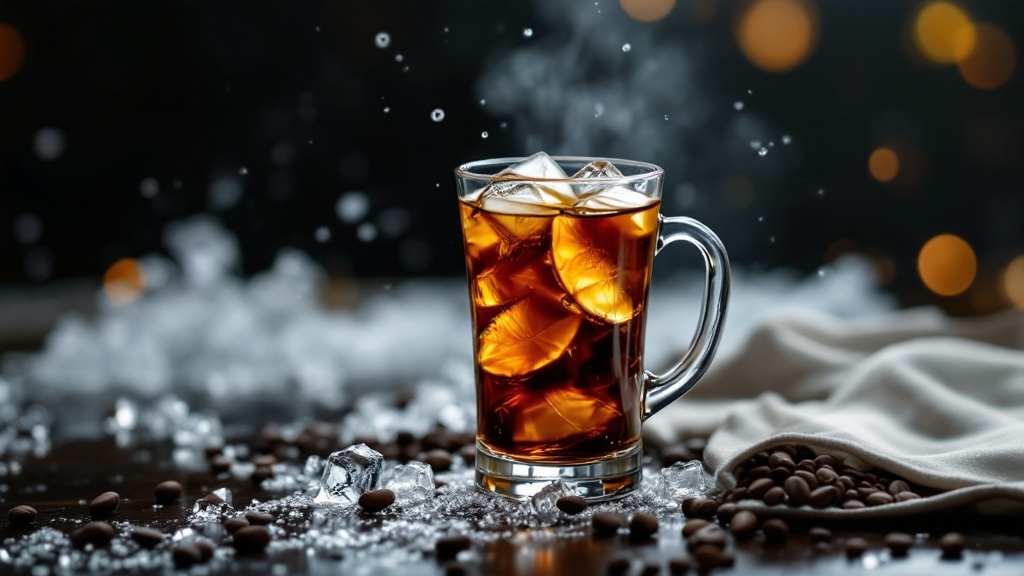
Cold brew coffee isn’t just iced coffee; it’s a completely different brewing process. Unlike iced coffee, which is brewed hot and then chilled, cold brew involves steeping coarsely ground coffee beans in cold or room-temperature water for 12-24 hours. This slow, gentle extraction process minimizes the release of bitter compounds and acids, resulting in a naturally sweet, smooth, and low-acid coffee concentrate. This concentrate can then be diluted with water or milk to your desired strength.
The difference is striking. Cold brew’s lower acidity makes it a gentler option for those with sensitive stomachs, while its rich, chocolatey notes appeal to a wide range of palates. It’s a versatile beverage that can be enjoyed straight, over ice, or as a base for lattes and other coffee creations. And because it’s a concentrate, you can easily customize the strength to your liking, ensuring the perfect cup every time. This gentle brewing method unlocks flavor profiles often masked by traditional hot brewing.
Cold Brew Extraction Kinetics
The extended steeping time in cold brew coffee significantly alters the extraction kinetics compared to hot brewing methods. Hot brewing, typically employing temperatures between 90-96°C, rapidly extracts both desirable and undesirable compounds from the coffee grounds. This rapid extraction leads to a higher concentration of bitter compounds, such as chlorogenic acids and caffeic acid, contributing to a more acidic and potentially bitter taste profile. In contrast, cold brew extraction, using temperatures near 4°C to ambient room temperature, proceeds at a much slower rate due to reduced solvent diffusivity and lower reaction rates. This slower extraction preferentially extracts certain flavor compounds while minimizing the extraction of bitter compounds and acids. This results in a smoother, less acidic, and more nuanced flavor profile, often described as having chocolatey or subtly sweet notes.
- Extraction rate is inversely proportional to temperature; lower temperatures significantly slow the process.
- Slower extraction allows for selective extraction of desirable flavor compounds like sugars and oils.
- Cold brew’s extended time allows for a deeper extraction of nuanced flavor notes, such as chocolate or caramel.
- The lower temperature minimizes the extraction of bitter compounds, resulting in a smoother cup.
- Different coffee bean origins and roast levels can impact the cold brew extraction kinetics differently.
- Grind size also influences extraction; coarser grinds typically result in slower extraction in cold brew.
| Key Aspect | Brewing Temp | Extraction Time | Flavor Profile |
|---|---|---|---|
| Cold Brew | 4°C to ambient | 12-24 hours | Smooth, low-acid, chocolatey |
| Hot Brew | 90-96°C | Minutes | Acidic, bitter, robust |
Choosing the Right Equipment for Cold Brewing
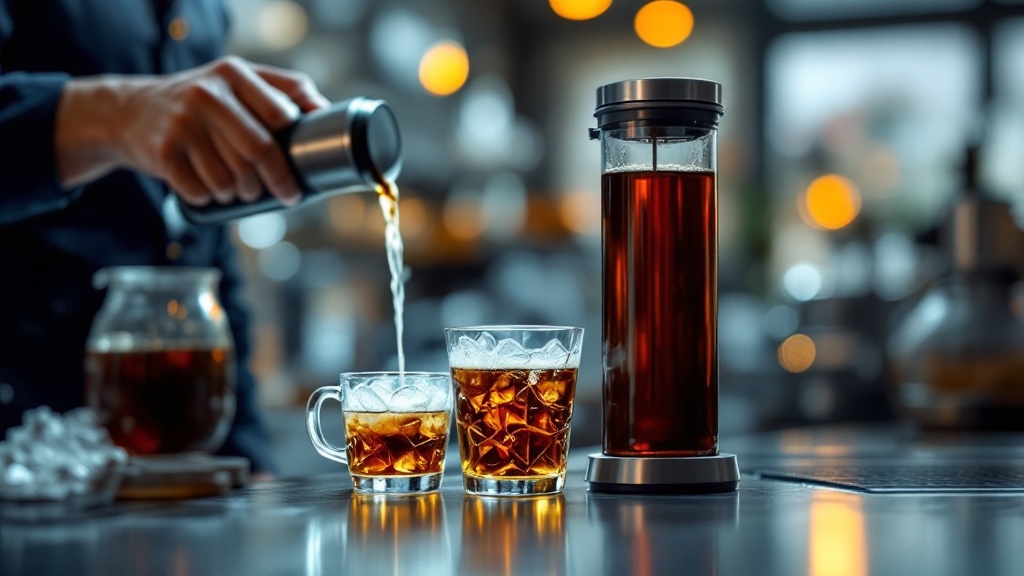
You don’t need fancy equipment to make excellent cold brew at home. A simple French press, a mason jar, or a dedicated cold brew maker like the Toddy Cold Brew System can all produce fantastic results. Websites likeFood & Wineoffer comprehensive reviews of different cold brew makers, helping you choose the best fit for your needs. Regardless of your chosen method, ensure all equipment is thoroughly cleaned before brewing to prevent bacterial growth during the long steeping process.
For beginners, a French press is an excellent entry point, offering a familiar and accessible brewing method. Simply add coarsely ground coffee and water, steep, and press. A mason jar offers a more minimalist approach, requiring only a jar, a filter (nut milk bags work well), and your ingredients. Dedicated cold brew systems like the Toddy system offer greater precision and larger batch sizes, perfect for committed cold brew enthusiasts. Choosing the right equipment often comes down to personal preference and brewing volume needs. Experimenting with different methods can help you find what works best for your lifestyle and desired flavor profile.
Cold Brew Extraction Optimization
The efficiency of cold brew extraction is significantly influenced by the particle size distribution of the coffee grounds and the resulting surface area available for solvent interaction. Using a burr grinder is crucial for achieving a consistent particle size, minimizing fines (very small particles) that can lead to over-extraction and bitterness, and maximizing the proportion of larger particles that contribute to a balanced flavor profile. A particle size of approximately 0.75 to 1.0 mm is generally recommended for optimal cold brew extraction. Fines, smaller than 0.5 mm, should be minimized as they contribute to excessive extraction, resulting in harsh, bitter flavors, and a sediment-heavy final product. Conversely, particles larger than 1.2 mm can lead to under-extraction resulting in weak and bland coffee. The optimal grind size may vary slightly depending on the specific coffee bean origin and roast level. Therefore, adjustments should be made based on sensory evaluation of the final brew.
- Using a scale to measure coffee beans ensures consistent coffee-to-water ratios, crucial for repeatable results.
- Bloom the grounds briefly before steeping to degas and enhance extraction uniformity.
- Experiment with different steeping times (12-24 hours) to fine-tune extraction based on bean type and desired strength.
- Cold brew coffee generally requires a coarser grind than hot brew, minimizing over-extraction.
- Proper filtration is essential to remove sediment; consider using a double filter system for optimal clarity.
- Consider using a sieve to remove extremely fine particles before steeping for better flavor control.
Mastering the Grind and Brew Ratio
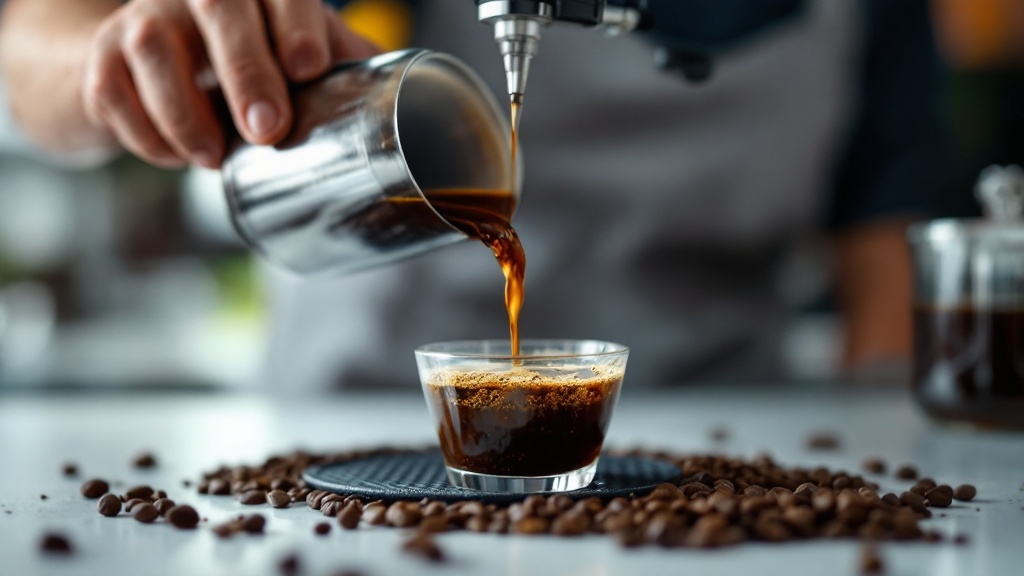
The key to a smooth, grit-free cold brew lies in the grind size. A coarse grind, similar to coarse sea salt, is essential. This prevents over-extraction and ensures a clean, sediment-free final product. Coupled with the correct grind is the coffee-to-water ratio. A good starting point is a 1:8 ratio (coffee to water), as recommended by the Specialty Coffee Association (SCA), but feel free to experiment with ratios ranging from 1:4 to 1:8 to find your preferred strength.
James Hoffmann, a renowned coffee expert (source), encourages experimentation with both grind size and brew ratios. This allows you to fine-tune your cold brew to your precise taste preferences. Once you’ve determined your ideal ratio, maintain consistency to ensure a predictable and enjoyable brewing experience each time. Remember, a finer grind can lead to a more bitter and over-extracted brew, while a coarser grind may result in a weaker, under-extracted coffee.
Cold Brew Extraction Optimization
Achieving optimal extraction in cold brew coffee requires a precise approach to particle size distribution and its impact on surface area. A coarse grind, visually comparable to coarse sea salt (approximately 1mm), maximizes surface area relative to volume, facilitating efficient extraction of desirable compounds without excessive leaching of bitter compounds from the coffee grounds. Finer grinds, despite potentially increasing surface area, lead to over-extraction due to increased solvent accessibility to the coffee matrix. This results in an excessively bitter, astringent, and potentially muddy brew. Using a burr grinder, rather than a blade grinder, is crucial for maintaining consistent particle size, minimizing uneven extraction, and promoting a more refined final product. The burr grinder’s precision allows for the selection of a specific grind size setting, whereas a blade grinder produces a heterogeneous mix of particle sizes, leading to inconsistencies in extraction. A sieve can further refine the ground coffee, ensuring uniformity and removing excessively fine particles.
- Optimal cold brew grind size is crucial; too fine leads to over-extraction and bitterness, while too coarse results in under-extraction and weak flavor.
- Water temperature slightly above room temperature (around 70-75°F) is ideal for cold brew extraction, maximizing flavor without excessive bitterness.
- Steep time significantly influences extraction; longer steeping times generally increase strength and bitterness, requiring adjustments to the coffee-to-water ratio.
- Using filtered water is recommended to avoid off-flavors from minerals impacting the delicate cold brew profile.
- Consider the coffee bean’s origin and roast level when determining grind size and steep time; darker roasts may require slightly coarser grinds and shorter steep times.
Steeping and Filtering: Patience is Key
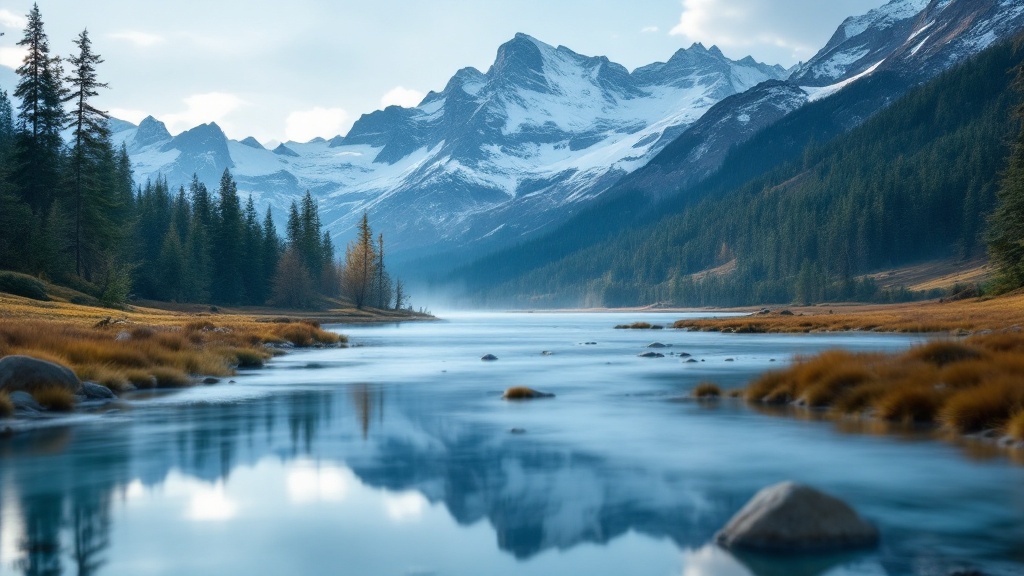
Cold brewing is a slow and steady process. After combining your coarsely ground coffee and filtered water (ideally between 68°F and 72°F), steep the mixture for 12-24 hours at room temperature or in the refrigerator. A longer steeping time typically results in a bolder, richer concentrate. Once steeping is complete, filter the grounds using a fine-mesh sieve, cheesecloth, or a specialized cold brew filter. This removes the grounds and leaves you with a smooth, concentrated cold brew.
Patience truly is a virtue when it comes to cold brew. Resist the urge to rush the process; the extended steeping time allows the coffee’s nuanced flavors to fully develop. While room temperature steeping is traditional, refrigerating your brew can slow down the extraction process, sometimes yielding a smoother, less acidic final product. Experiment with both methods to discover your preference. After filtering, your cold brew concentrate is ready to be diluted and enjoyed.
Cold Brew Extraction Kinetics
The extraction of soluble compounds from coffee grounds during cold brewing is a diffusion-controlled process. Unlike hot brewing, where temperature accelerates the rate of extraction, cold brewing relies on a slower, more prolonged diffusion of water into the coffee particles. This allows for a more selective extraction of certain desirable compounds, resulting in a smoother, less acidic concentrate compared to hot brew methods. The rate of extraction is directly proportional to the surface area of the coffee grounds and inversely proportional to the distance the water molecules must travel to reach the soluble compounds within the grounds. Therefore, coarsely ground coffee is preferred for cold brewing to maximize surface area and minimize extraction time, while ensuring a sufficient concentration of flavorful components is obtained within the desired timeframe.
- Extraction time significantly impacts flavor profile; longer steeps yield more concentrated brews.
- Coarse grinds offer optimal surface area for efficient extraction within a reasonable timeframe (12-24 hours).
- Finer grinds increase surface area but risk over-extraction and bitterness if brew time isn’t carefully controlled.
- Water temperature, while lower than hot brewing, still influences extraction rate; cooler water slows the process.
- Coffee-to-water ratio directly impacts the final concentration; a higher ratio yields a stronger brew.
Storing and Serving Your Cold Brew Masterpiece
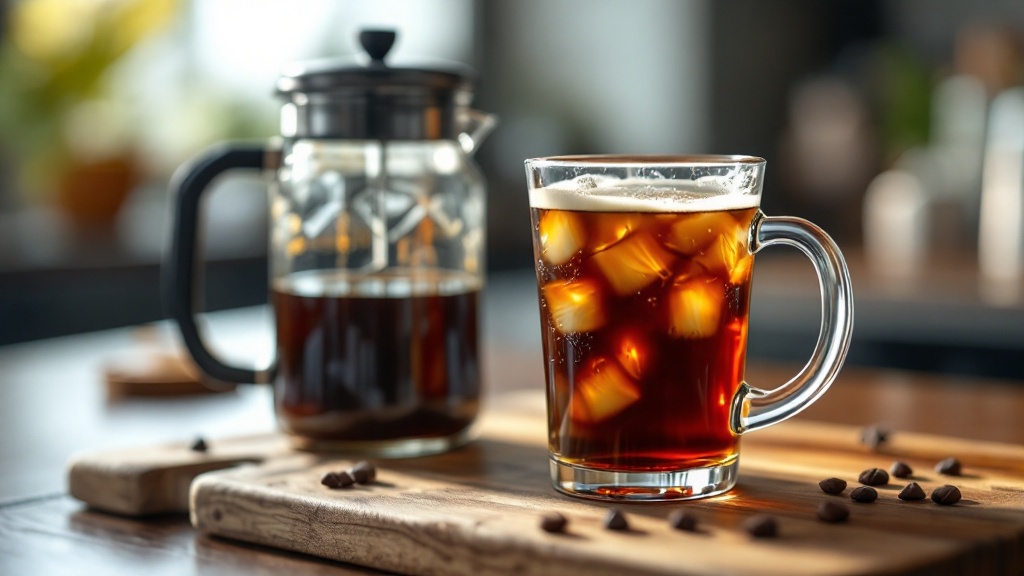
Your cold brew concentrate can be stored in an airtight container in the refrigerator for up to two weeks. When ready to serve, dilute the concentrate with water or milk to your desired strength. A 1:1 ratio is a common starting point, but you can adjust according to your taste. Cold brew is incredibly versatile; enjoy it over ice, add a splash of milk or cream, or use it as a base for delicious coffee cocktails.
Cold brew’s long shelf life makes it a convenient option for busy mornings. Prepare a batch on the weekend and enjoy it throughout the week. It’s also a fantastic base for creating innovative coffee drinks. Try adding flavored syrups, spices like cinnamon or nutmeg, or even a touch of your favorite liqueur. The possibilities are endless! Get creative and explore the diverse world of cold brew-based beverages. The smooth, low-acid profile provides a perfect canvas for flavor experimentation.
Cold Brew Concentrate Stability
The extended shelf life of refrigerated cold brew concentrate, typically up to two weeks, is primarily attributed to several factors influencing microbial growth and enzymatic activity. Low pH, a result of the brewing process itself, inhibits the proliferation of many spoilage microorganisms. Cold brew coffee generally exhibits a pH range of 4.5-5.5, well below the optimal range for most bacteria. This acidic environment restricts the growth of undesirable bacteria and yeasts that contribute to spoilage, resulting in a longer shelf life compared to traditional hot brewed coffee. Furthermore, the absence of high temperatures during the brewing process minimizes the thermal degradation of coffee components and reduces the generation of volatile compounds that can contribute to off-flavors and accelerated spoilage.
- Proper storage at 35-40°F (2-4°C) is crucial for maintaining concentrate quality and preventing spoilage beyond two weeks.
- The low oxygen environment in airtight containers further inhibits microbial growth, extending shelf life.
- Using high-quality, freshly roasted beans significantly impacts the concentrate’s initial microbial load and inherent stability.
- Adding preservatives, while uncommon, can further extend the shelf life of cold brew concentrate; however, this may alter the flavor profile.
- The type of filtration used during brewing can affect the final pH and, consequently, the concentrate’s stability.
The Rise of Cold Brew: A Global Phenomenon
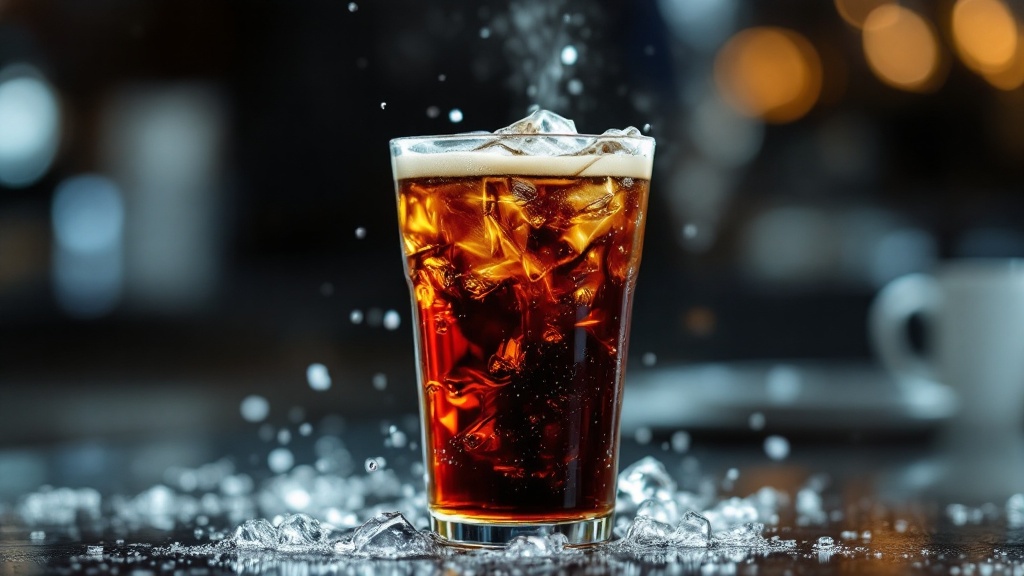
Cold brew has evolved from a niche beverage to a global sensation. Its popularity has surged in recent years, fueled by the growing specialty coffee movement and increasing consumer demand for ready-to-drink (RTD) coffee options. The global cold brew coffee market was valued at $1.37 billion in 2022 and is projected to grow at a CAGR of 25.1% from 2023 to 2030 (source). This impressive growth reflects the widespread appeal of cold brew and its increasing integration into mainstream coffee culture.
From independent coffee shops to large commercial brands, cold brew is now a staple offering. Innovations like nitro cold brew, which infuses cold brew with nitrogen gas for a creamy, Guinness-like texture (source), have further elevated the cold brew experience. This trend has been embraced by both consumers and businesses, adding another layer of sophistication and enjoyment to the cold brew landscape. The ongoing development of new flavors and brewing techniques ensures that the future of cold brew remains exciting and innovative.
Cold Brew Extraction Kinetics
The production of cold brew coffee relies heavily on the principles of mass transfer, specifically the extraction of soluble compounds from coffee grounds into water over an extended period at low temperatures. Unlike hot brewing methods that utilize high temperatures to accelerate extraction, cold brew leverages longer contact times to achieve similar or even superior extraction profiles. This slow extraction process favors the extraction of less bitter compounds, resulting in a smoother, less acidic final product. The rate of extraction is governed by factors including the coffee-to-water ratio, grind size, water temperature, and brewing time. Finer grinds offer a greater surface area for extraction, leading to faster extraction rates, but this can also contribute to over-extraction and increased bitterness if not carefully controlled. Conversely, coarser grinds slow down the extraction process, potentially resulting in under-extracted coffee if the brewing time is insufficient.
- Extraction rate is significantly influenced by coffee-to-water ratio; a higher ratio generally leads to stronger brews but can also increase extraction time.
- Water temperature, even in cold brew, affects extraction; slightly cooler water (around 68-75°F) can slow extraction, improving clarity.
- Optimal grind size for cold brew is typically coarser than for hot brew, minimizing over-extraction and sediment.
- Longer brewing times (12-24 hours) allow for the extraction of desirable flavor compounds while avoiding harsh bitterness associated with rapid hot brewing.
- Agitation during steeping can increase extraction rate by improving contact between water and coffee grounds but requires careful management to prevent over-extraction.
Conclusion: Embrace the Cold Brew Revolution
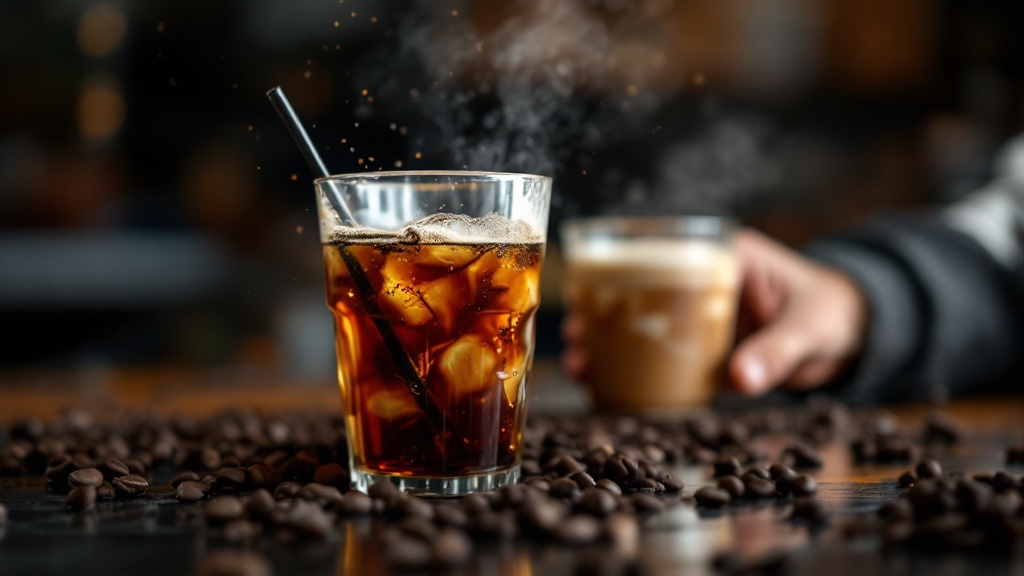
Cold brew coffee is more than just a trendy beverage; it’s a testament to the power of slow, deliberate brewing. By embracing this simple yet transformative technique, you can unlock a world of rich, smooth, and incredibly flavorful coffee. Whether you’re a seasoned coffee aficionado or just beginning your coffee journey, exploring the world of cold brew is a rewarding experience. So, gather your equipment, select your favorite beans, and embark on your cold brewing adventure. You might just discover your new favorite way to enjoy coffee.
Cold Brew Extraction Kinetics
The extended steeping time in cold brew coffee significantly alters the extraction kinetics compared to traditional hot brewing methods. Hot brewing, typically employing temperatures between 90-96°C, rapidly extracts both desirable and undesirable compounds from the coffee grounds. This results in a faster extraction rate and a brew profile heavily influenced by high-extraction compounds, often leading to increased bitterness and astringency. In contrast, cold brew extraction, utilizing temperatures between 4-20°C, proceeds at a much slower rate. This allows for a more selective extraction, preferentially favoring the extraction of desirable flavor compounds like sweetness and complex aromatics while minimizing the extraction of bitter compounds like chlorogenic acids.
- Cold brew’s lower temperature reduces the rate of diffusion, slowing the extraction process which can take 12-24 hours.
- The slower extraction minimizes the extraction of bitter compounds like caffeic acid and quinic acid.
- This results in a smoother, less acidic, and less bitter cup compared to hot brewed coffee.
- Cold brew coffee generally has a higher concentration of caffeine due to the longer extraction time.
- The final concentration of extracted compounds is dependent on factors like coffee-to-water ratio, grind size, and steeping time.
| Key Aspect | Extraction Temp | Extraction Time | Flavor Profile |
|---|---|---|---|
| Cold Brew | 4-20°C | 12-24 hours | Smooth, less acidic, less bitter |
| Hot Brew | 90-96°C | Minutes | Bitter, astringent, high-extraction |

